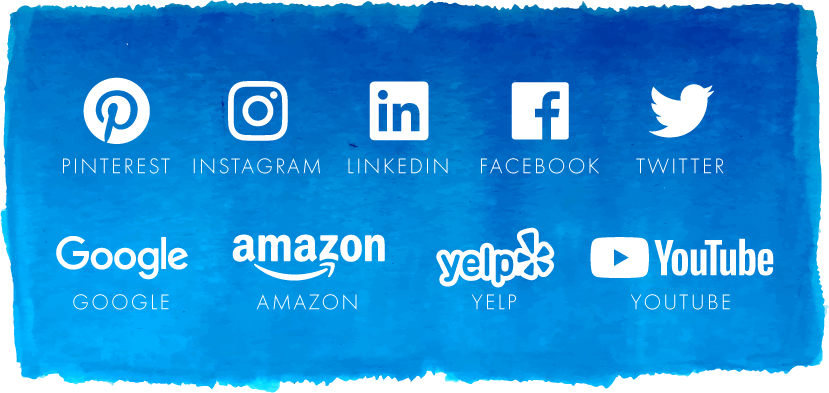Use Cases for Social Media Data
Social media dominates much of our lives and many organizations now realize its ubiquity has created opportunities to leverage social media data responsibly for positive returns to the business. Forbes indicates that companies are spending an average of 18% of their marketing budgets on social media and this number will continue to grow in the next five years. Benefits are typically measured in brand awareness, loyalty, and new customer acquisition, but advanced analytics opens new doors to capitalize on this rich data source.
Social media data provides insights otherwise unachievable. This level of data is hard for companies to achieve through other means like surveys or focus groups, which have some inherent bias in response rate and willingness to participate. Brands should be aware of all the ways they can begin to use social media data to make operational improvements throughout the business.
Social Media Data to Improve Forecasts
Forecast demand has long been a challenge for retailers and manufacturers in the consumer products industry. Over time, various approaches have been employed – from forecasts based on experience or simple calculations to account for growth and year-over-year changes, up through advanced statistical modeling that can account for seasonality, cyclicity, and trend. Machine learning has opened up new opportunities to leverage historical data. While many companies still struggle to enable machine learning within their business, the value is readily clear. What sets machine learning apart as a forecasting method is that it can use many inputs of different types of data, whereas statistical approaches can only process the values themselves over time.
For instance, when building a demand forecast, consider how much more accurate a model could be with access to additional features like holiday indicators, weather information, and pricing and promotional data. These additional features enrich the historical data and create more accurate predictions. With a machine learning model, social data can be used as an input to build a forecast. One example would be to include the percentage of tweets or mentions with a positive sentiment about a product in the forecasting model to understand the effects on sales. Especially with fast-changing trends, processing social media with machine learning allows companies to anticipate and quickly respond to changes in consumer demand.
Social Media Data as a Demand Signal
Not only can your business build an effective forecast, you can also identify demand drivers through feature analysis. There are many interesting methods to use machine learning to analyze feature weights, or the impact of each column in calculating the model result. For example, if you find that the number of likes on Instagram is a stronger indicator of sales than likes on Facebook for your product or target customer segment, then you can focus marketing resources accordingly. From there, you can also analyze the effects of combining social media inputs. Maybe likes on Instagram and Facebook aren’t strong indicators of demand independently but together show a stronger relationship driving sales.
Being able to react to popular posts on social media provides an opportunity to stand out, as well as show authenticity and connection to the social media world where people spend hours every day. Nielson data from 2018 found that adults above age 18 spend an average of 45 minutes a day on social media, mostly via smartphones. With such immediacy to the purchasing channels, if your brand goes viral through a celebrity or influencer post for example, it could lead to a direct, sometimes major, increase in sales. As a recent example, Harrison Ford used a hands-free crutch called iWALK2.0 following an injury filming Star Wars 7, leading to a 40% increase in sales. Having mechanisms in place to identify and quantify that impact can help manage the changes in demand through production planning and allocation.
Social Media Impacts the In-Store Experience
Accurate planning can greatly influence a customer’s in-store experience as well. Improving forecast accuracy through the inclusion of social data inputs opens the door to new opportunities. With the right approach, retailers can improve merchandising, ensure the optimal SKU mix, optimize inventory to avoid out-of-stocks, and inform dynamic pricing to present the right promotion at the right time. Nordstrom provides a winning example of a retailer using social data to benefit the in-store experience. They are tracking pins on Pinterest to identify trending products and subsequently using that information to promote those products in-store.
Study after study has shown that, when used appropriately and respecting of consumer privacy, consumers value targeted offers. Using social data like reviews in real-time with geolocation data allows companies to make relevant offers to customers near or in stores. Using social location data could enable companies to make targeted offers to brick-and-mortar stores nearby.
Social Media’s Influence on Marketing
Social platforms are very often used for customers to vent their concerns or issues with products, brands, or companies. A broad swath of consumers tap into networks like Twitter and Facebook for customer service. This public information can provide a competitive edge when gathered and processed effectively. Imagine being able to scrape Twitter on keywords for your competitors’ products and search for negative sentiment. With this information, you can learn about your customer’s needs, and you can turn those insights to actions by making customized promotional offers to those dissatisfied customers in order to gain market share.
Knowing your customers and creating personalized experiences for them is key to brand loyalty and an expectation of the modern informed consumer. According to Google’s report data, there are three main asks that today’s consumer has of brands: help me faster, know me better, and wow me everywhere. Scraping social networks for feedback from your customers in reviews and comments creates a rich data source that can be processed through machine learning algorithms to identify sentiment, search for keywords, and identify themes.
Imagine a skin care company monitoring Amazon reviews through web scraping. They reveal a recent group of customers citing issues with an odd odor with one product. They take this insight to their quality team and trace the root cause to solve the problem, and then work with customer service to reach out or reply to those customers to address the issue and protect brand image. A problem that could’ve flown under the radar and not reached customer service for days or weeks is immediately identified and quickly resolved.
Social Media Data in Customer Profiling
The ability to know your customer is not only good for sales and brand loyalty but is ultimately an expectation. 61% of people expect brands to provide a tailored, personalized experience. Using social media data provides a direct source of customer preference, avoiding some biases you might find in survey results or feedback.
Learning about your customer is helpful to inform customer segmentation, but it can also create a profile of your target demographic and identify a network of similar potential customers. AI enables companies to collect social media data, create a profile of their most loyal customer and their networks, explore those networks for new customers, and then market directly back to that group, or even offer click-to-purchase opportunities directly in those same social media platforms to shorten the path from inspiration to purchase.
Companies have begun successfully collecting, processing, and acting on social media data leveraging artificial intelligence and machine learning. As capabilities and the market evolve, similar initiatives will be a strategic imperative across the consumer products industry. While the benefits to be realized are significant, it’s critical to responsibly manage social media data as consumer sentiment towards privacy continues to evolve.
To be effective, companies need to identify areas online where their user communities have consistently active participation to gather data. Like any other data source used for advanced analytics, the social media data collected should be profiled for quality and examined outliers, as well as analyzed for correlation with other attributes and the target variables. As with all analytics, it’s what you use it for that really counts – what processes can be improved using the insights gained through social media data?
Social Media Platforms

 Brand Categorization
Brand Categorization
Most platforms enable tagging to group together similar posts. Tags can be powerful, leading to viral collections of content around a subject, and users often make up their own tags, showing their individuality or making jokes
 Likes
Likes
The number of likes on many social platforms drives the visibility of the liked content. Likes are often seen not only by the user’s network, but also by the network of anyone who interacted with the post, so the simple like button holds a lot of power
 Reshares/Reposts
Reshares/Reposts
Users can reshare the sentiment of others, multiplying the prevalence of the original content, and often leave their own comment or take with the shared post. While sharing a post associates the new user with that content, sharing a post does not always mean agreement with the content – many times posts are shared with a retort or disagreement
 Linking
Linking
Including hyperlinks provides a sense of who a user is through articles, product webpages, or other social media content.
 Comments
Comments
The number of comments on a post, similarly to likes, are a main signal of interaction with that content. The effort behind typing a response typically indicates an even higher level of engagement than a like
 Reviews
Reviews
Review data, both qualitative through comments and quantitative through ratings like 5 stars, provide direct feedback from consumers
 Location Data
Location Data
Users are more and more checking in to specific geographic areas and showing their location in their social media posts, indicating where they spend time and endorsing things like businesses or parks
 Network
Network
Whether it’s the list of friends or followers, the number and identify of connected social networks indicate the level of interaction each user has online. Social networks allow you to see who follows a user, who a user follows, and the overall size of each user’s direct and indirect reach
Coauthor and contributions by Elise Watson, Meghan McCullough, and Dayna Larson



